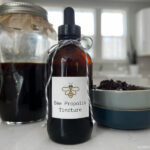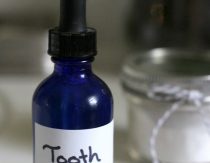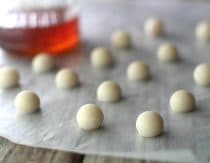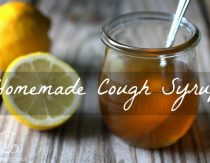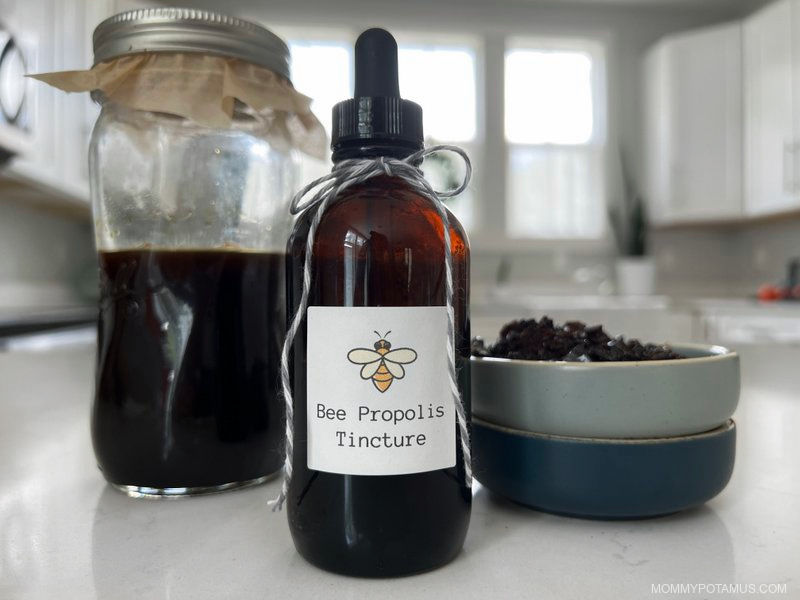
Have you ever mixed up a simple homemade cough syrup with honey or massaged this healing salve into a strained muscle? If so, you’ve already experienced some of the benefits of an ancient healing modality called apitherapy – aka the use of bee products for therapeutic purposes.
Clinical research now supports many traditional apitherapy uses, which is why you can now find medical grade honey for wound healing, store-bought honey cough syrup, and healing balms that include honey, propolis extract, bee pollen and royal jelly. Even bee venom has been the subject of clinical research. (1)
Products that focus exclusively on propolis are growing in number, too, and for good reason. It was revered by ancient Greeks, Romans and Egyptians, who “were aware of the healing properties of propolis and made extensive use of it as a medicine.” (2)
Modern research supports many of its traditional uses for immune system vitality, oral and gut microbiome health, wound healing and more.
So what exactly is it and how is it used? We’ll dive into all that below, but first I want to mention that none of these statements have been evaluated by the FDA, this article is not medical advice, and it’s not meant to diagnose or treat any condition. If you have a question about whether any dietary supplement is right for you, please talk with a qualified healthcare professional. Okay, let’s dive in!
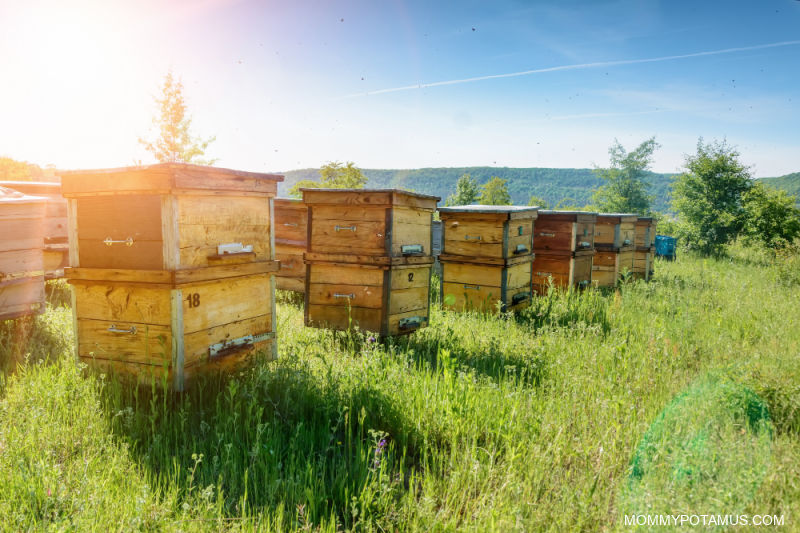
What is bee propolis?
Aristotle himself is said to have coined the word propolis, which combines the Greek words pro (“in front of” or “in defense of”) and polis (“city”) to mean “in defense of the city” . . . or more accurately, the hive. (3) (4)
To understand why hives need such strong defenses, it’s important to know that honeybees “have far fewer genes dedicated to immune response” than any other insects that have undergone genome mapping, yet they live in cramped quarters that would seemingly be vulnerable to all kinds of unwanted pathogens. (5)
So how . . .
does a colony of bees, usually of 50,000 or more, crowded into a virtually hermetically-sealed space, at a constant temperature of 35°C (95°F) and with moisture levels of 90 per cent, manage to survive? Surely these conditions are perfect for the growing of bacteria and the spreading of disease, and yet bees have not only survived but prospered in such conditions.” (6)
The answer, of course, is propolis. Sometimes called “bee glue,” it’s a sticky mixture of tree resins, enzymes, and beeswax that bees use as a building material to plug up gaps and coat the walls. They also use it to narrow the entrance of the hive so that it’s easier to defend.
In addition to providing structural protection, propolis helps maintain the sanitary state of the hive via several bioactive compounds.
Dramatic as this may sound it is hard to avoid the conclusion that propolis effectively provides a form of externalised immune defence mechanism for the beehive, fulfilling its role in a multitude of ways. It does this at times by using very simple, practical, structural mechanisms. At other times it involves highly complex, pharmacological processes, aspects of which are as yet not entirely understood.” (6)
Beekeepers often remove bits of propolis while caring for their hives, but harvesting larger amounts usually involves placing a flexible screen with cracks just inside the top of the hive cover. The bees will instinctively fill in all the cracks, which allows the beekeeper to remove the entire screen and harvest the propolis.
Researchers used to think that encouraging bees to increase production in this way might decrease the quality of the propolis, but analysis of samples hasn’t shown this to be true. (Yay bees!) (7)
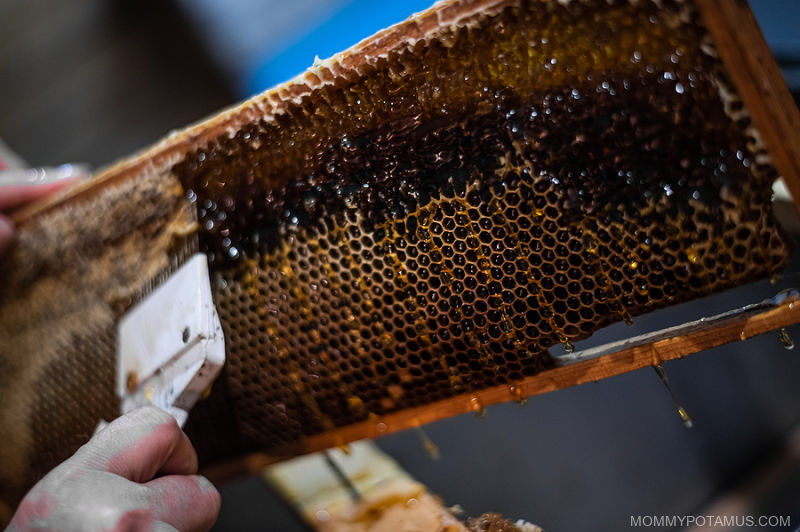
Bioactive Compounds In Bee Propolis
Bees are basically alchemists – they use plants from all around the world to create propolis, and even though each batch is unique in its chemical composition the synergistic effect is roughly the same. Unlike many natural products, there is no single “active” compound or set of compounds in propolis that outshines all the rest. Each batch varies based on region, the species of honey bee and the season in which the propolis was created. (7) (8)
According to Dr. Antanas Gendrolis, a Lithuanian researcher and apitherapy expert, scientists “have identified more than 67 species of plants from which bees collect raw materials for propolis,” and each one uniquely influences the color, aroma and flavor of the final product. (7)
Birch trees create green propolis, while others yield yellow or dark brown varieties. Although less common, it can even be pink if resin is gathered mostly from poplars. (7)
One of the most popular types of propolis – Brazilian – is primarily made from the resin of the Baccharis dracunculifolia plant (a type of rosemary) and tends to be green in color.
High quality propolis contains up to 70% resin and enzymes, with the remaining part comprising of beeswax, essential oils, and pollen. The “amount of wax depends on the use of propolis in the beehive: if it is used to strengthen the combs and repair the cracks in the hive, it contains more wax, and if it is used to cover the walls of the hive, honeycomb polishing, it has a lesser amount of wax.” (7)
All in all, over 600 bioactive compounds have been identified, including:
- Potent flavonoids (quercetin, pinobanksin, apigenin, chrysin, pinocembrin, and galangin)
- Phenolic acids and coumarins (caffeic, coumaric acid, ferulic, and isoferulic acids, and caffeic acid phenethyl ester)
- Flavonols, flavones, and flavonones (galangin,kaempferol, isorhamnetin, apigenin, pinocembrin and pinobanksin)
- Minerals (manganese, zinc, chromium, potassium, phosphorus, iron, magnesium and more)
- Amino acids (mostly arginine and proline)
- Small amounts of some vitamins (B1, B2, B6, C and E plus beta-carotene) (7)(9)
Together, these compounds form the complex and highly synergistic sticky substance we call propolis. Each constituent complements and reinforces the biological activity of the others, making it one of the most fascinating and useful substances we know of.
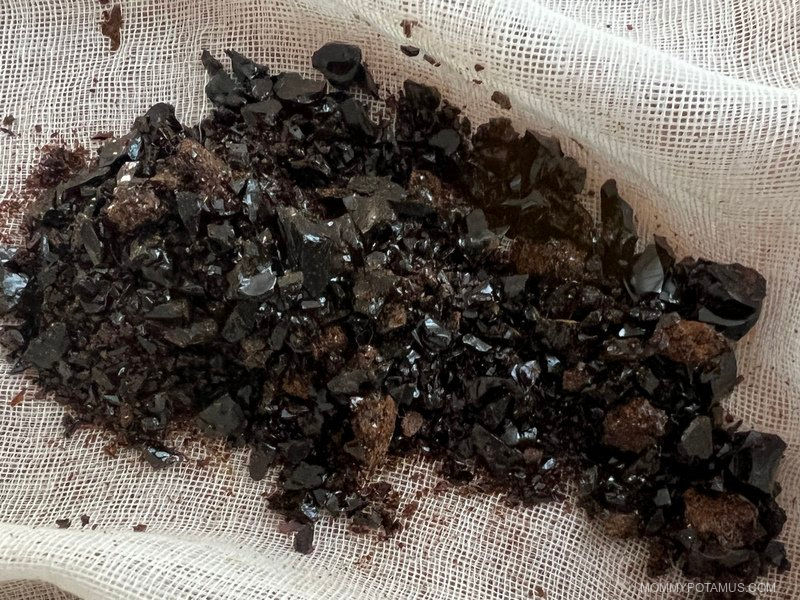
6 Health Benefits of Propolis
Aristotle was so fascinated by bees that he commissioned a beehive to be constructed out of glass so he could observe them. It would have been amazing if it had worked, but they covered the walls in dark, sticky propolis and thwarted his plans. (6)
Despite possibly coining the word, Aristotle was far from the only individual fascinated by bees and bee products. Prominent Greek physicians such as Pedanius Dioscorides (40–90 CE) and Galen (129–217 CE) both wrote about the therapeutic uses of propolis, as did Aristotle. (4)
Modern physicians and researchers are still exploring it’s benefits, which include:
#1 – Immune System Support
Resin is part of a tree’s immune system, so the bees borrow a little to create propolis, which functions as “an extension of their immune system” according to Ross Conrad, author of Natural Beekeeping: Organic Approaches to Modern Apiculture. (5)
When we borrow a bit of propolis from the bees, it’s no surprise that the main objective is often immune support, too. Modern research supports this approach, with many studies finding that it has a beneficial influence on human immune function. (9) (10) (11) (12)
#2 – Soothes A Sore Throat
In this study, a throat spray containing propolis significantly eased discomfort in participants with sore throats. Research suggests that it helps by:
- Soothing inflammation via a wide range of anti-inflammatory compounds
- Helping to balance the oral/throat microbiome (13)
In another study, a oral supplementation with propolis also noticeably improved sore throat symptoms. (14)
Many lozenges contain corn syrup, but this one is formulated without it. There are lots of high quality throat sprays available, including:
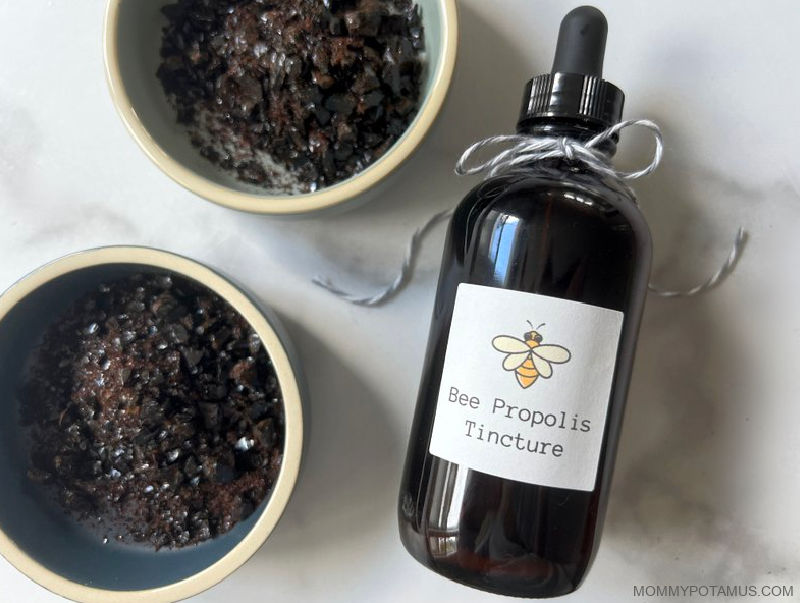
#3 – Supports Wound Healing
Hippocrates, who is considered the father of modern medicine, was one of the first physicians to use propolis on wounds. (15) Not surprisingly, in recent studies topical propolis has been found to support healing for a variety of wounds including burns and surgical incisions. (16) (17)
It’s thought to help by:
- Supporting skin cell rejuvenation (16)
- Helping skin to maintain a sanitary state (which is one of the roles propolis plays in the hive)
Topical creams containing propolis are available – this is one worth considering.
When applied three times per day, ointments containing 0.5-3% propolis have also been found to ease cold sore symptoms. (18) Most options are formulated with petrolatum and liquid paraffin, but this one is made with natural oils and essential oils.
#4 – Supports Oral Health
A few years ago, a dentist put a sample of my saliva under a microscope for me to look at, and I realized I had some work to do regarding my oral health. I’d been focusing on my gut health for many years, but the mouth has its own unique microbiome that also deserves attention.
One thing I incorporated immediately was a dental probiotic, and more recently I’ve started adding a little propolis extract to my homemade mouthwash. Here’s why:
In two separate clinical trials with 70+ kids and a few adults, propolis reduced plaque buildup while supporting beneficial bacteria in the oral microbiome. (19) (20) The thing I love most about this study is that it was done with kids, because we all know kids are not always the most thorough when brushing their teeth.
In another small study, it actually worked better than regular commercial toothpaste for reducing plaque. (21) And in this study, children who used a chewing gum containing propolis and xylitol had lower counts of a bacteria called Streptococcus mutans, which is considered to be one of the primary causes of tooth decay and cavities. (22)
My checkups with my dentist showed a huge positive shift in my oral microbiome after incorporating a dental probiotic, and I’m looking forward to finding out what impact the propolis will have at the next cleaning.
#5 – Antioxidant Support
Our bodies break down toxins via oxidation – a process that transforms them into water-soluble compounds that can be flushed out of the body. Oxidation produces free radicals, which can damage tissues and accelerate aging,
Propolis is rich in antioxidants that help neutralize free radicals, which helps to reduce oxidative stress. (23) (24) (25) In one study, it also supported the production of glutathione, which is our body’s master antioxidant. (26)
#6 – Digestive Health
Research suggests that propolis supplementation may have a positive influence on the gut microbiome and the barrier function of intestinal walls. (27) It’s rich in polyphenols that feed beneficial bacteria while also soothing irritation
Where To Buy Propolis
There are a lot of high quality pre-made propolis extracts, spray, creams and other products available, but if you want to try your hand at making your own extract you’ll need to start with raw propolis. The best way to buy some is to reach out to your local beekeepers and see if they have any available – it’s often the most affordable option.
If you are unable to find it locally, Stakich is a family-owned company that’s been operating for nearly a century in rural Michigan. They sell propolis chunks that have been refined to remove the beeswax, plus pre-made propolis tinctures and other products. Their propolis chunks are also available here.
DIY Propolis Tincture Recipe
Equipment
- cheesecloth
- Clean meat mallet or sauerkraut packer
- 16 ounce jar
- Clean cutting board
- Glass amber dropper bottles (I usually divide mine between two 4 ounce bottles and one 2 ounce bottle)
- 1.5 inch square labels (optional)
- Downloadable label template (see download form below)
Ingredients
- 1-2 ounces bee propolis (by weight)
- 9 ounces strong grain alcohol (Not rubbing alcohol – a grain alcohol intended for consumption. 75 proof or higher is best)
Instructions
- Weigh 1-2 ounces of propolis and 9 ounces of high proof alcohol on a kitchen scale. Set alcohol aside.
- Place the propolis chunks inside a cheesecloth and set the cloth on a clean cutting board.
- Using a clean meat mallet or sauerkraut packer, pound the propolis into fine granules.
- Place propolis in a 16 ounce jar and then add the alcohol.
- Put the lid on. (If you're using a metal lid, line it with parchment paper so that it doesn’t come in contact with the tincture.)
- Shake the jar well, then set it in a dark place (like a cabinet) and shake daily for two weeks.
- After two weeks, strain the liquid through a piece of cheesecloth and then pour the propolis tincture into glass amber dropper bottles for use. Store in a cool, dark area (like a cabinet).
Notes
Tips for Using Propolis Tincture
Since propolis is not a pharmaceutical product there are no official dosages, but some suppliers do provide general recommendations for usage. For example, this one from Herb Pharm, which combines propolis with 81-91% alcohol (roughly 160-180 proof) suggests “Two to four times per day 30 to 40 drops in a little water” for adults.
Propolis tincture can also be diluted in a bit of water to use as a mouth rinse, applied topically to cuts, scrapes, or cold sores, or added to a bandage before it is placed over a wound.
Who should not use bee propolis?
According to Dr. Antanas Gendrolis, the Lithuanian researcher and apitherapy expert I mentioned earlier, there are a few safety considerations regarding propolis. Here are his suggestions, which are from his book: Propolis. Natural Medicine. (translated from Lithuanian):
Although to our best knowledge, no harm of propolis has been established, however, it was observed that some people are allergic, therefore, you must first make sure that you are not sensitive to it. It must be used with caution by patients with bronchial asthma, eczema and other allergic diseases. If you notice allergic reactions from propolis, its use should be discontinued.
Prof. A. Siniakov states that about 0.3 to 2% of people are allergic to propolis. In mild cases, local symptoms of a week allergic reaction appear (redness, itching, rash, etc.), in severe cases, a common reaction is weakness, dizziness, fever, etc. All this indicates that you cannot start the treatment with propolis products without first checking the patient allergenicity.
. . . Note that propolis may enhance and potentiate some antihypertensive medicines. Therefore, when prescribing propolis, you may need to lower the quantities of blood pressure-lowering medicine. Propolis products should also be used with caution in patients with decreased blood viscosity. Since propolis extracts contain significant concentrations of ethanol, therefore, patients with liver disease can use it only after consultation with a doctor.”
He also adds that a physician’s dosage recommendations should always be followed. In the United States doctors rarely suggest propolis – though mine does – and no formal dosage are established, so most people opt to follow the manufacturer’s instructions.
A couple of additional notes:
- Individuals who are allergic to bees or other bee products such as honey should avoid propolis
- An in vitro (test tube) study suggests that propolis may lower the availability of the CYP1AA2 enzyme that is used to metabolize several common medicines including metabolism of theophylline, acetaminophen, propranolol and a number of antidepressants. Always consult with your doctor before using propolis if you are on any prescription medications.
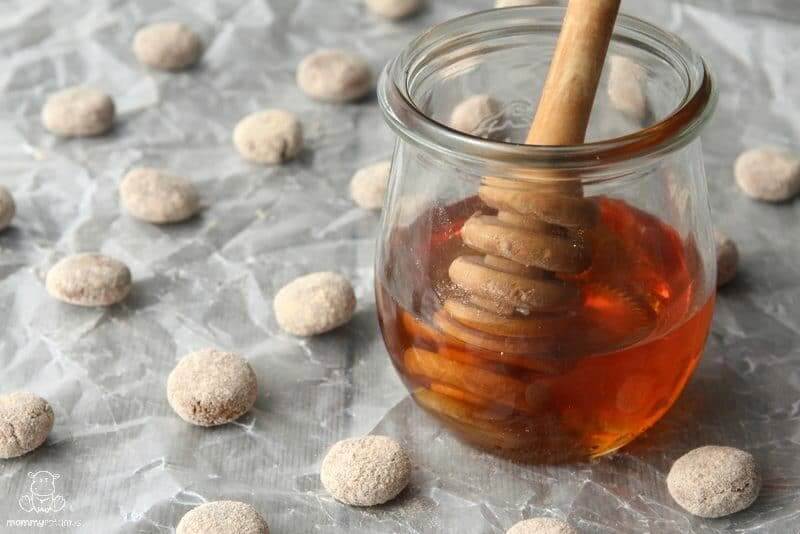
More Apitherapy Recipes To Try
Honey Cough Syrup – This three-ingredient recipe is my go-to for sore, scratchy throats. (Four if you add a bit of propolis extract!)
Honey & Lemon Herbal Cough Drops – These cough drops are amazing for soothing a sore, scratchy throat. They’re easy to make and you only need five natural ingredients.
Fire Cider – This spicy, delicious apple cider vinegar infusion is made with powerful immune-supporting, lymph moving, circulation stimulating, and digestion enhancing fresh herbs mixed with honey.
Elderberry Syrup – Elderberries are revered for their ability to support immune function, increase vitamin C absorption, and more. Here’s how to make a delicious traditional preparation of elderberries and honey at home.
Want more research-backed natural remedies?
No problem, I’ve created a free ebook for you – Kitchen Apothecary: 25+ Natural Remedies Using Ingredients From Your Pantry – as a gift for signing up for my newsletter. You’ll also get updates when I post about safe essential oils for pregnant/breastfeeding mamas, exclusive gifts and coupons (I was able to give away a jar of free coconut oil to anyone who wanted it recently!), plus other goodies.
Sign up using the form below.
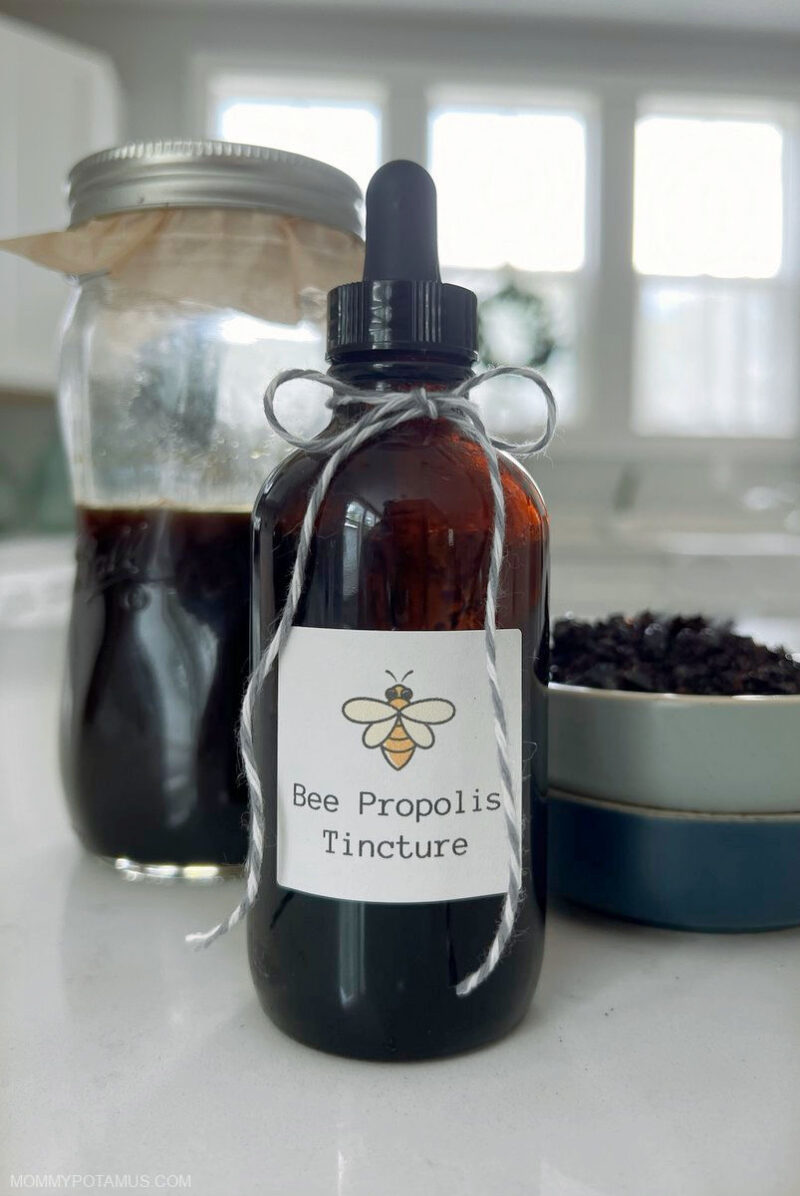
Sources
- Zhang, Shuai et. al. (2018) Bee venom therapy: Potential mechanisms and therapeutic applications
- Kuropatnicki, Andrzej K. et. al. (2013) Historical Aspects of Propolis Research in Modern Times
- Ahuja, Vipin et. al. (2011) Apitherapy – A sweet approach to dental diseases. Part II: Propolis
- Bruneau, Stephanie (2017) The Benevolent Bee: Capture the Bounty of the Hive through Science, History, Home Remedies, and Craft
- Conrad, Ross (2016) Processing Propolis: Part I
- BeeVital. The Role of Propolis In The Beehive
- Gendrolis, Antanas (2017) Propolis. Natural Medicine
- Salleh, Sharifah Nur Amalina Syed et. al. (2021) Analysis of bioactive compounds and chemical composition of Malaysian stingless bee propolis water extracts
- Al-Hariri, Mohammed (2019) Immune’s-boosting agent: Immunomodulation potentials of propolis
- Magnavacca, Andrea et. al. (2021) The antiviral and immunomodulatory activities of propolis: An update and future perspectives for respiratory diseases
- Pahlavani, Naseh et. al. (2020) Molecular and cellular mechanisms of the effects of Propolis in inflammation, oxidative stress and glycemic control in chronic diseases
- Tao, Yang et. al. (2014) The Immunological Enhancement Activity of Propolis Flavonoids Liposome In Vitro and In Vivo
- Governa, Paolo (2019) Beyond the Biological Effect of a Chemically Characterized Poplar Propolis: Antibacterial and Antiviral Activity and Comparison with Flurbiprofen in Cytokines Release by LPS-Stimulated Human Mononuclear Cells
- Di Pierro, Francesco et. al. (2016) Role of a proprietary propolis-based product on the wait-and-see approach in acute otitis media and in preventing evolution to tracheitis, bronchitis, or rhinosinusitis from nonstreptococcal pharyngitis
- Rojczyk, Ewa et. al. (2020) Historical and modern research on propolis and its application in wound healing and other fields of medicine and contributions by Polish studies
- Martinotti, Simona et. al. (2015) Propolis: a new frontier for wound healing?
- Barroso, Poliana Ribeiro et. al. (2012) Effect of propolis on mast cells in wound healing
- National Library of Medicine: MedlinePlus. Propolis.
- Koo, Hyung (2002) Effect of a mouthrinse containing selected propolis on 3-day dental plaque accumulation and polysaccharide formation
- Verma, Manjesh Kumar et. al. (2014) The antimicrobial effectiveness of 25% propolis extract in root canal irrigation of primary teeth
- Bhat, Nagesh et. al. (2015) The antiplaque efficacy of propolis-based herbal toothpaste: A crossover clinical study
- Tulsan, Sneha Girdharii et. al. (2014) The effect of Propolis and Xylitol chewing gums on salivary Streptococcus mutans count: a clinical trial
- Afsharpour, Fatemeh et. al. (2019) Propolis supplementation improves glycemic and antioxidant status in patients with type 2 diabetes: A randomized, double-blind, placebo-controlled study
- Zhao, Liting et. al. (2016) Brazilian Green Propolis Improves Antioxidant Function in Patients with Type 2 Diabetes Mellitus
- Mujica, Verónica et. al. (2017) The Role of Propolis in Oxidative Stress and Lipid Metabolism: A Randomized Controlled Trial
- Diniz, Débora P. et. al. (2020) Antioxidant Effect of Standardized Extract of Propolis (EPP-AF®) in Healthy Volunteers: A “Before and After” Clinical Study
- Xue, Meilan et. al. (2019) Propolis modulates the gut microbiota and improves the intestinal mucosal barrier function in diabetic rats

